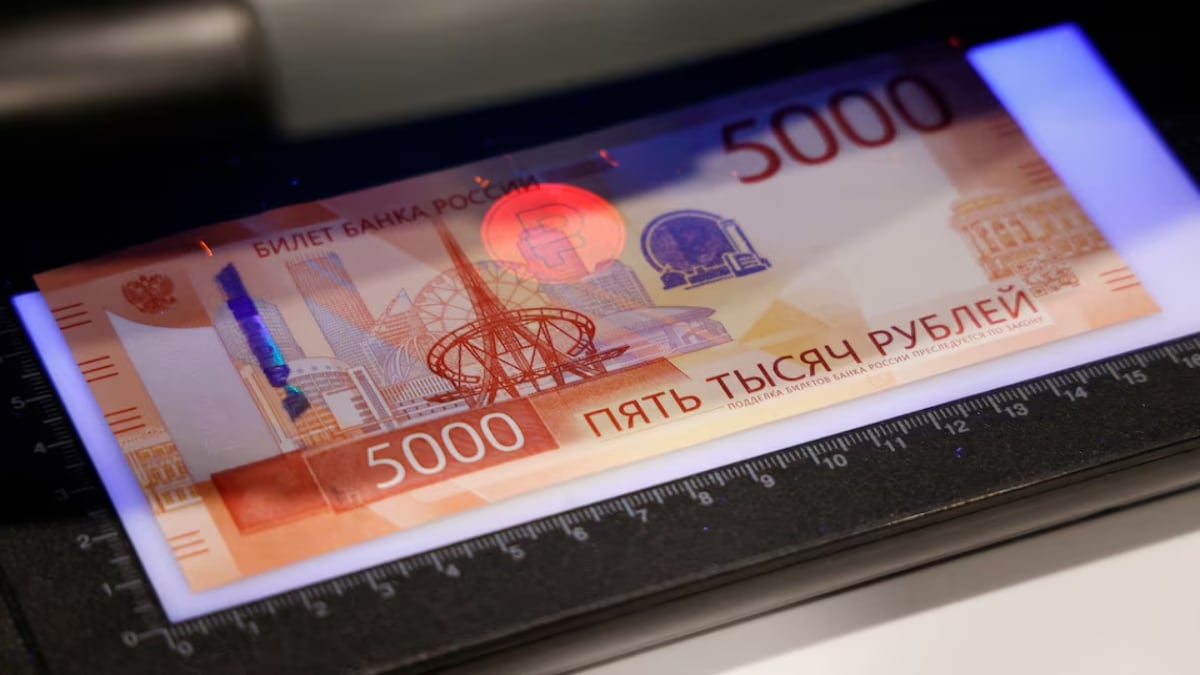

The Russian ruble has emerged as a surprising victor in the global currency arena, exhibiting remarkable strength against the U.S. dollar. This year, the ruble has posted the world's strongest gains against the dollar, outperforming even traditional safe-haven assets like gold. While various figures are reported, sources indicate the ruble has appreciated by approximately 38-45% against the dollar since the beginning of 2025. This surge has placed the ruble at levels not seen since June 2024.
Several factors contribute to the ruble's unexpected rise. A key element is the shift in the geopolitical landscape, particularly the perceived thaw in relations between Moscow and Washington following a phone call between Russian President Vladimir Putin and U.S. President Donald Trump. This has eased concerns about the future of the Russian economy and boosted confidence in Russian assets. Markets began to factor in the possibility of de-escalation, making the Russian currency more attractive to investors.
Furthermore, domestic policy measures have played a significant role. Russia's high key interest rate, currently at 21%, has curbed domestic demand and slashed import volumes. This tight monetary policy has reduced the demand for foreign goods, leaving more foreign currency within Russia. The Kremlin's intervention in the currency market, through the sale of foreign currencies from its national wealth fund, has also helped to support the ruble.
However, the weakening dollar, driven in part by President Trump's trade war, has also amplified the ruble's rise. The U.S. Dollar Index has reached multi-year lows, signaling a potential crisis of confidence in the dollar. Rising U.S. tariffs are potentially undermining the currency's traditional safe-haven appeal, creating opportunities for alternative currencies like the ruble. As Trump's aggressive tariff policies rattle global markets, the dollar has slumped, further bolstering the ruble.
Despite the ruble's impressive performance, its strength presents potential risks to Russia's economy. The appreciation of the ruble undermines revenues from oil exports, the Kremlin's primary source of hard currency. With government spending heavily inflated by military expenditures, a stronger ruble translates to fewer rubles earned from each barrel of oil sold. The Russian federal budget was calculated with an average rate of 96.5 rubles per dollar, a level significantly below the current exchange rate. The Russian Central Bank has also warned of the risks associated with falling oil prices and global trade slowdown. If Trump's trade war escalates, demand for Russian oil and gas could weaken, negatively impacting the Russian economy.
Analysts suggest that the ruble's rise may be driven by "speculative euphoria" rather than fundamental economic factors. While the ruble has benefited from importers stocking up on goods in advance and a lull in Chinese business activity due to the Chinese New Year, these factors may not be sustainable in the long term. The long-term sustainability of the ruble's rise depends on volatile external factors, including the outcome of negotiations over the war in Ukraine and President Trump's trade policies.
Looking ahead, forecasts for the ruble's performance against the dollar remain mixed. While some predict a continued rise, others caution about potential risks and challenges to the Russian economy. The ruble's trajectory will likely depend on a complex interplay of geopolitical events, economic policies, and global market dynamics.